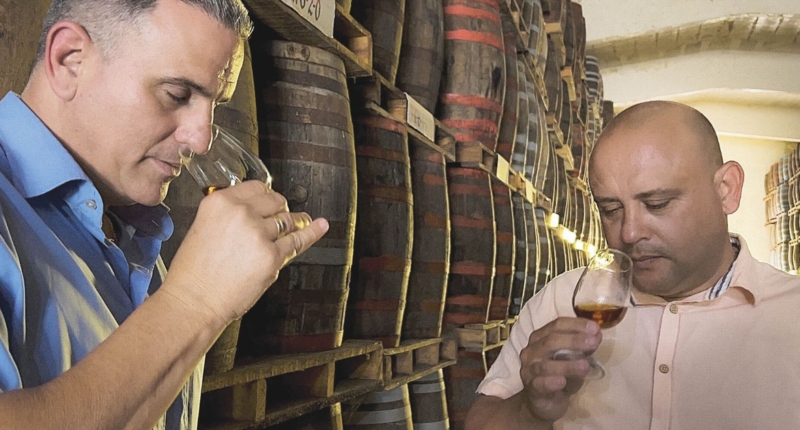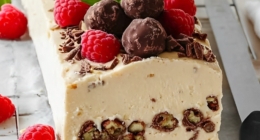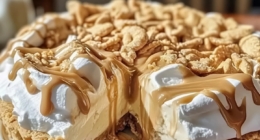Cesar Marti is a rum-maker in Santo Domingo, Cuba, who is preserving the unique tradition of Cuban rum-making. He takes pride in the natural maturation process of his American oak barrels and the unique aromas of his alcoholic beverages. Cuban rum is unique because it is entirely made from molasses and is produced through discontinuous distillation. The Cuban rum-making process has become the first in the world to be endowed with intangible cultural heritage status by UNESCO. Each rum master is bound by a code of ethics to ensure the quality and sustainability of Cuban rum, and they regularly discuss various issues, such as climate change, sugarcane cultivation, and international norms. Marti believes that rum-making is extremely difficult, and oral transmission is essential to passing on knowledge and experience from one generation to the next. He is currently training his own apprentice, Mitehel Niebla, who is falling in love with the tradition. Marti’s passion, expertise, and attention to detail have paid off, with his talent not escaping the attention of French luxury brand Louis Vuitton Moet Hennessy (LVMH), which asked him to create an exclusive Cuban rum to be sold in Europe.
Preserving a Century-old Tradition of Cuban Rum-making
Cuban rum-making is a century-old tradition, and Cesar Marti is a rum-maker who takes pride in preserving this unique practice. His distillery is located in Santo Domingo, Cuba, and is home to the “Central Rum Factory,” where the aroma of sugar, spices, ripe fruit, and alcohol mixes to produce a sweet-tasting product the Caribbean island is known for.
The American oak barrels in which the alcoholic beverages are matured naturally are piled up to the ceiling. These barrels are where the oldest rums and spirits in the center of Cuba patiently relax, some for as long as seven decades. Marti is proud of the unique aromas and natural maturation process of his barrels, which make his rum-making process stand out.
Cuban rum is unique because it is entirely made from molasses, the viscous residue produced by refining sugarcane, followed by a short period of fermentation and discontinuous distillation. Cuban rum masters, including Marti, are the guardians of this tradition, picking the molasses, producing the best liquors, ensuring the mixtures, and aging the spirits. Marti insists that rum-making is extremely difficult, but he is never tired of working in this distillery and says that he still feels the same pleasure each morning entering his workplace, even after 20 years.
Marti, 46, is the custodian of a secular tradition that was refined in the 19th century when the first modern stills were introduced to Cuba during a sugar boom. He is the youngest Cuban “first rum master” after spending nine years as an apprentice and another 12 years of work, coupled with a scientific thesis. He insists that oral transmission remains essential to passing on knowledge and experience from one generation to the next, although a background in studying science at university is a prerequisite to improve technical processes.
Today, there are two “first rum masters,” the most experienced ones, seven rum masters, including two women, and five “apprentices” working in Cuba. Each has been rigorously co-opted.
Cesar Marti takes pride in preserving the century-old tradition of Cuban rum-making. His expertise, passion, and knowledge of rum-making are essential to ensuring that the tradition continues to thrive. His rum-making process is unique, and the aroma and natural maturation process of his American oak barrels are a testament to his mastery. His work is part of Cuba’s intangible cultural heritage and is critical to the island’s economy.
Creating an Exclusive Cuban Rum: Marti’s Motivation
Cesar Marti, the Cuban rum-maker and the custodian of a century-old tradition, has been asked by French luxury brand Louis Vuitton Moet Hennessy (LVMH) to create an exclusive Cuban rum to be sold in Europe. Marti is known for his talent and passion for rum-making and is motivated by creativity, often looking for the right blend of fruity or floral tastes and herbal scents to take consumers on a journey to the Cuban countryside.
Marti takes pride in being the custodian of a tradition that has been going on for eight generations. His love for the tradition has inspired him to train his own apprentice, 42-year-old Mitehel Niebla. Niebla has been learning the trade for seven years and is currently concentrating on the cultural part and history of Cuban rum as part of his apprenticeship.
Cuban rum-making has become the first production system in the world to be endowed with intangible cultural heritage status by UNESCO. While each rum master works in a different state-owned distillery and for a different brand, they are all bound by a code of ethics to ensure the quality and sustainability of Cuban rum. During their regular meetings, they discuss the threat of climate change, sugarcane cultivation, and international norms, among other issues.
Marti believes that the role of a rum master is to assimilate, with humility, the techniques, history, and sensorial diversity of liquors bequeathed by predecessors and to be generous so that others are able to continue transmitting this heritage in the future. His attention to detail and passion for the tradition have paid off, as he continues to preserve the unique aromas and natural maturation process of his American oak barrels.
Don’t miss interesting posts on Famousbio










